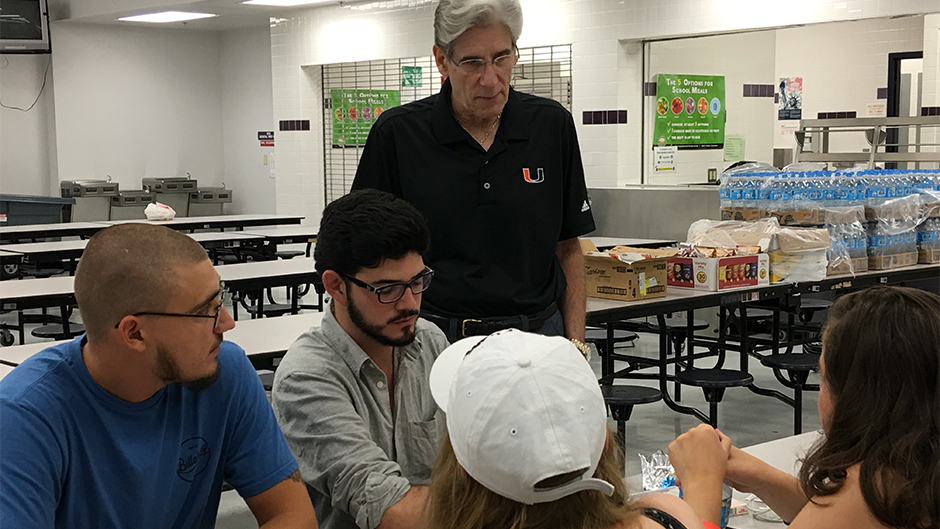On Tuesday, September 5, with Hurricane Irma more than four days away from Miami but threatening the destructive power of a category 5 storm, members of the University of Miami Crisis Decision Team moved quickly and decisively to cancel classes beginning on Wednesday until further notice. Their primary goal: safeguard the 4,300 students on campus, helping as many as possible to evacuate and providing services and accommodations for those unable to leave.
Ivan Ceballos, director of residential life, whose responsibilities include student safety and crisis response, was at the forefront of the student evacuation effort. He and his team quickly met with students and briefed them on the University’s hurricane plans. Shuttles were arranged that same afternoon to begin ferrying students who could not leave town to Publix and CVS to stock up on water, batteries, and any necessary medications. Another shuttle service began transporting students to Miami International and Ft. Lauderdale-Hollywood International airports. Nearly 600 students took advantage of the two days of airport shuttle service, according to Ceballos.
“Thankfully, we were able to get most of the students evacuated and out of town,” Ceballos said. ”By Wednesday morning we anticipated 143 students with nowhere to go, and by Friday that number dwindled to 60.”
Although the Coral Gables campus was not in a mandatory Miami-Dade County evacuation area, out of an abundance of caution the University made a proactive decision to transport those 60 students, nearly all of them from foreign countries, to a secure shelter nearby. The threat of facing a major storm might have proved to be a harrowing and anxious experience, yet it helped bond the students together.
“There was an especially strong sense of camaraderie. It was certainly an experience they’ll never forget—and they definitely made some new friendships,” Ceballos said. “Everywhere you turned, the students were willing and eager to help make this work.”
At the shelter site, the students rearranged furniture and set up their sleeping cots, on separate floors for men and women. Accompanying the students for the duration of their stay were 14 Housing and Residential Life staff members, as well as UM physician Joseph Reinhardt, UM Counseling Center psychologist Benjamin Stocking, and the University’s first full-time priest, Father Phillip Tran. Together they enjoyed hot meals—ravioli, pizza, burgers, and fresh produce for dinner, biscuits and sausage, and cereal for brunch. Their accommodations included AC and WiFi—most of the time—and other entertainment.
Once the storm safely passed, the group was relocated back to campus. They set up cots in the Multipurpose Room at the Newman Alumni Center, determined to be a safe facility. Then Ceballos’s team got an unexpected phone call that a nearby hotel was able to offer accommodations for the students until the residential facilities could be assessed and safely reopened.
“There was a roaring round of applause when I made the announcement,” Ceballos said.
Ceballos was impressed with the group’s willingness to pull together during a truly challenging experience. He recounted one moment when, as the bus was transporting the students, a felled tree blocked the bus path. Without needing to be asked, a group of students filed off the bus to move the tree out of the way.
“There was just so many examples over those few days of the group pulling together to make the best of the experience, and all the feedback that we’ve gotten from the group was overwhelming positive and appreciative,” he said.

